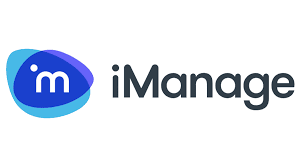By Lucy Saddleton, Managing Editor
About this three-part webinar series:
In the first installment of The Legal Innovation Forum’s three-part Capital Markets Webinar Series in March 2025, we brought together thought leaders and innovators from both sides of the border to explore the evolving North American market of mergers and acquisitions in an era of political instability, rising interest rates and cost of capital, and the new tariff and trade playbook.
Our attendees heard about the future outlook for global dealflow and gained critical insights into the evolving regulatory state, and an understanding of the most active sectors for deals in 2025.
This panel featured David Felicissimo, general counsel at Valsoft Corporation; Nigel Rughani, VP, corporate development at Vertex; Christine Kim, associate at Clifford Chance; John Clifford, partner at McMillan; and Marshall Eidinger, partner at Bennett Jones; together with our moderator, Andrew Bowyer, founder and CEO at ADB Insights.
This three-part blog series captures the highlights of the discussion in bite-sized blog posts with corresponding video clips.
In association with

THE CURRENT M&A LANDSCAPE
Our speakers began by discussing the current landscape for M&A, noting that 2024 was a strong year for dealmaking in Canada with four consecutive quarters of growth, leading to expectations of continued growth in 2025. However, this trend turned rapidly downwards in Q1, amid tariffs imposed by the new US administration on Canada and other countries.
“There’s really been a chill that’s come to the market in Q1 of this year, and no one’s quite certain what the exit’s going to be from that,” said John Clifford, Toronto-based partner at McMillan.
From the US perspective, Christine Kim, associate at Clifford Chance, noted that dealmakers south of the border are still waiting for the dust to settle on evolving regulations, driven in large part by changing politics. Dealmakers have mixed expectations about the impact of those changing regulations, Kim said.
US BUYERS SEEK CANADIAN ASSETS
With lower prices, lower insurance premiums and less risk, Canadian assets have become more attractive to US buyers. US companies are increasingly eyeing Canadian tech companies, as they are not caught up in tariffs.
Toronto-based partner at Bennett Jones, Marshall Eidinger, noted that he considers assets in three separate buckets from the selling perspective: those that fall within the tariff regime, those that are adjacent, and those that fall outside of the regime.
“To the extent you’re outside of the regime or adjacent, you still look pretty good to buyers,” said Eidinger. “If you’re a high quality asset that’s outside of the regime or adjacent, I think you can expect a lot of demand.” Foreign firms are viewing Canadian assets as quite attractive, and so the high demand is creating auction deals for quality assets, he added.
TECH ACQUISITIONS
On the buying side, Q1 did not bring a slowdown for Valsoft — a Montreal-based company that specializes in the acquisition and development of software companies in vertical markets. With software generally excluded from tariffs, Valsoft has announced some large transactions in the tech sector, notably in the AI and cybersecurity spaces.
“We’re seeing divestitures much more than owner operator entities being sold,” said David Felicissimo, general counsel at Valsoft. “I think that has to do with the regime as well.
“We are seeing some hesitation from US sellers, but nothing that’s caused a rip in our pipeline. Our pipeline has been extremely healthy, but we are seeing owner operators hold on to businesses a bit more,” he added.
Meanwhile, south of the border, tax compliance enterprise software SAS and services company, Vertex Inc., has been busy with corporate development and M&A, with five transactions announced during the past year. The company went public in 2020, expanding the brand and providing the funding for more transactions.
“We’ve been on a tear in terms of trying to continue growing, and building our business since our IPO,” said Nigel Rughani, VP, corporate development at Vertex.
Watch this section of the panel discussion below:
FUTURE OUTLOOK
Our speakers advised businesses to proceed with caution in dealmaking if impacted by tariffs but to look for opportunities if not, suggesting that the current environment may present opportunities for cross-border and domestic deals.
“If you’re cross border, take advantage of the low Canadian dollar value relative to the US,” said Clifford. “If you’re in Canada, it’s probably a good time to do a domestic-to-domestic deal with the lower interest rates. It depends where you are, but there may be opportunities to be had even in the short term.”
Kim emphasized the importance of looking inward and pressure-testing home supply chains to mitigate risks.
“I don’t think the message from this panel is doom and gloom,” said Kim. “I do think it’s wait and see. In addition to looking out, you can be looking in and looking at your home supply chain, and pressure testing that, to see how vulnerable it is to the types of shared around-the-world risks that we’ve been talking about on this panel.”
Eidinger anticipated more market consolidation in areas such as the EV space, noting that there are a lot of charging station providers, but no really large one. Small and medium sized businesses may all join forces to improve cash flow, he suggested.
Rughani and Felicissimo highlighted the continued demand for high-quality assets and the potential for Canadian M&A to thrive in the second half of the year, with increased interest from European players.
Felicissimo anticipated continued opportunities to invest in divestitures from US parents of Canadian subsidiaries. “It’s an opportunity that’s very ripe,” he said.
Watch this section of the panel discussion below:

